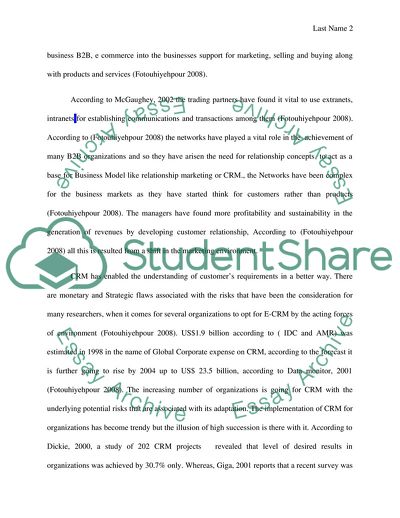Cite this document
(Evaluating the Use of CRM Applications in B2B Businesses Research Paper Example | Topics and Well Written Essays - 2750 words, n.d.)
Evaluating the Use of CRM Applications in B2B Businesses Research Paper Example | Topics and Well Written Essays - 2750 words. https://studentshare.org/information-technology/1848608-management-information-system-mis-evaluating-the-use-of-crm-applications-in-b2b-businesses
Evaluating the Use of CRM Applications in B2B Businesses Research Paper Example | Topics and Well Written Essays - 2750 words. https://studentshare.org/information-technology/1848608-management-information-system-mis-evaluating-the-use-of-crm-applications-in-b2b-businesses
(Evaluating the Use of CRM Applications in B2B Businesses Research Paper Example | Topics and Well Written Essays - 2750 Words)
Evaluating the Use of CRM Applications in B2B Businesses Research Paper Example | Topics and Well Written Essays - 2750 Words. https://studentshare.org/information-technology/1848608-management-information-system-mis-evaluating-the-use-of-crm-applications-in-b2b-businesses.
Evaluating the Use of CRM Applications in B2B Businesses Research Paper Example | Topics and Well Written Essays - 2750 Words. https://studentshare.org/information-technology/1848608-management-information-system-mis-evaluating-the-use-of-crm-applications-in-b2b-businesses.
“Evaluating the Use of CRM Applications in B2B Businesses Research Paper Example | Topics and Well Written Essays - 2750 Words”. https://studentshare.org/information-technology/1848608-management-information-system-mis-evaluating-the-use-of-crm-applications-in-b2b-businesses.


